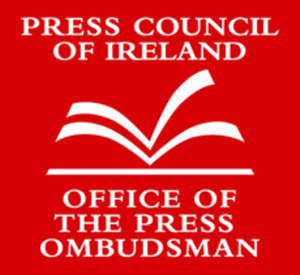As the war progressed, rumours swept the country of foreign incursions and sinister hostile action. Seamus O’Brien was “off-duty” on a warm autumn evening in 1940 when a “Red Alert” invasion scare sent shock waves through Callan.
He was in the Garda station helping his father to install new shelves in the dayroom. As he passed a nail to his father he heard the telephone ring behind him. He saw Garda Tim Sheehan lazily pick it up, yawning as he asked who was calling.
Suddenly the guard’s face turned red, his mouth drooped, and he exclaimed: “Oh Mother of God you don’t say, oh Jesus 'tis the end of us all.” Seamus’ father dropped the hammer.
The two carpenters were staring wide-eyed at the flustered guard, who roared at Seamus: “Young fella, get me a pen and some paper, hurry boy!”
Seamus handed both to him, and watched with bated breath as the guard transcribed an alarming message: “Six parachutists reported landed in Abbeyleix. Inform all substations immediately and instruct them to notify the emergency services and Red Cross units.”
Garda Sheehan sent Seamus running out of the station to fetch Sergeant Tom Kilroy and Garda Mick Jennings, neither of whom could be contacted by phone. “Tell them to report here immediately,” he hollered. “The invasion may have begun!”
Seamus arrived back breathless with the two guards half an hour later, and Garda Sheehan was still on the phone, spreading the word. At the time, Callan had a far-reaching Garda district that extended southwest through Piltown as far as Mooncoin, so the guard who had received the message was kept busy.
That night a full-scale military alert was declared. LSF men of the A and B groups backed up regular Army units as the civilian population of Callan and district prepared for the worst.
The parish priest, Father Phelan, appeared on the street outside the church with a blackthorn stick in one hand and a rosary beads in the other. He called locals in to pray for salvation. The pubs began to fill up.
From the pavement on the opposite side of Green Street, facing the Big Chapel, Tommy Holden the baker called out to the PP: “Father, are we invaded yet? What do ya think?”
“We might be, but with the help of God we’ll survive and see it through. Please pray Tommy!” Father Phelan hollered back.
The message received in Callan referred to six parachutists, but these could, people suspected, be just the ones who were spotted. There would surely be thousands more dropping from the skies in no time at all.
The LSF B Groups patrolled the roads, while the A Groups, including Seamus’ one, were sent to guard the crossroads. He noticed that some of his youthful comrades were carrying loaded shotguns during this alert.
Things were getting serious, he told himself. The Germans were coming, and he might soon have to confront those seemingly invincible troops who had conquered most of Europe.
As the night wore on, Seamus asked for a cigarette from another volunteer as he huddled shivering under a big chestnut tree in the dark. He suspected the fags weren’t healthy, but sure they could all be dead soon, he groaned, or banished to a prisoner of war camp for years.
Then, towards morning, word came that the alert had been a false alarm, though it later emerged that it had been part of a simulated military exercise to test the readiness for action and efficiency of the LSF.
Among the B Group volunteers who featured in this and other exercises were: William Keogh, Bridge Street; Denis Holden, Clonmel Road; Edward Neary, Green Street; Patrick Dooley, Green Street; Michael Dowling, Carabine Bridge; Johnny Tyrell, Bridge Street; and Danny Mullrooney, Green Street.
The publicity, gossip, and excitement generated by this incident boosted LSF membership, with dozens of eager men and boys queuing up at Callan Garda station to enlist.
Uniforms arrive…
A development that boosted the morale and relative effectiveness of the Callan LSF was the arrival in early 1941 of long awaited uniforms for the men. Throughout 1940 there had been considerable confusion among the men as to which ranks their comrades held in the force.
It was common for volunteers to be reprimanded for speaking out of turn or “giving guff” to a superior officer whose status was unknown due to his civilian clothing.
As a tailor by trade, LSF Adjutant Paddy Funchion proved a great asset to the Callan force. He measured all the local volunteers for their uniforms, entering his measurements in a little book and then passing the details on to the supply department.
Seamus was one of a dozen LSF men waiting excitedly outside Callan Garda station for the first consignment of uniforms to arrive.
Garda Maloney, a jovial man who doubled as LSF district administrative officer, stood at the entrance to the station. He chatted with the men, promising them that the new rig-outs would be worth waiting for. “Ye’ll be the talk of the town, lads, and the swankiest men in Ireland,” he teased, as he pasted a fly to the barracks wall with his polished black baton.
The men eyed their watches, paced about edgily, or glared down Green Street with mounting impatience. Seamus sat on the barracks wall, daydreaming about what locals would think of him in his uniform, and especially how the girls would react.
He expected romance to blossom once they clapped eyes on his manly form parading through town like a real soldier. The girls loved a man in uniform, his father had told him. He couldn’t wait to try it on.
(From Are We Invaded Yet? by John Fitzgerald
(to be continued )
